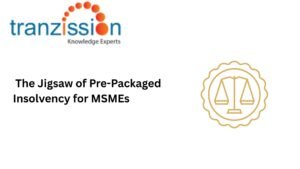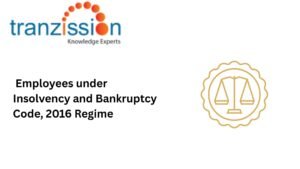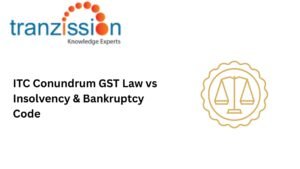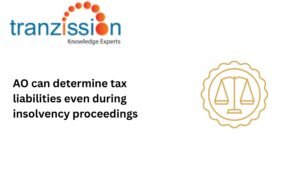
Role of IBC in SME Restructuring
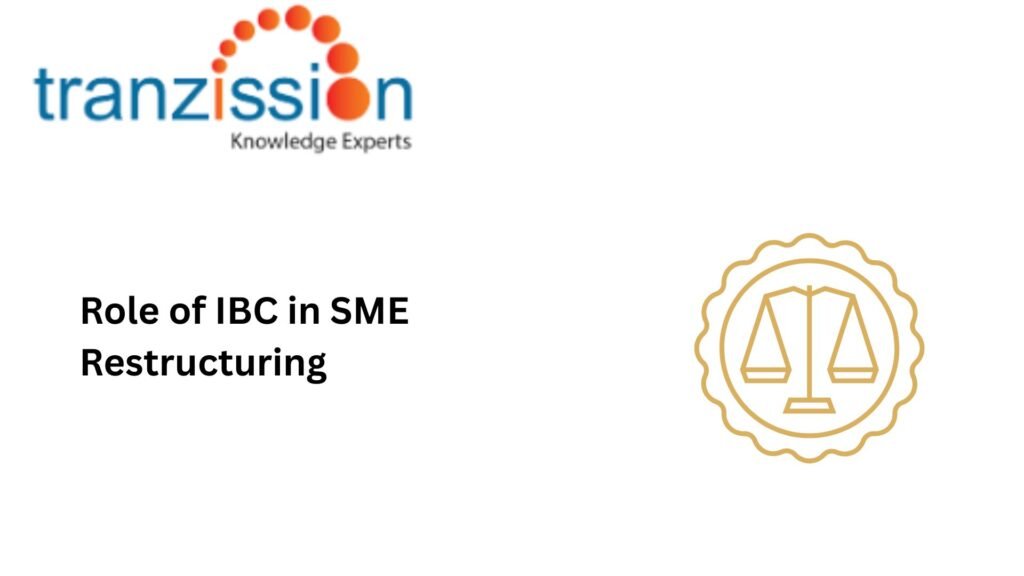
Table of Contents
The Insolvency and Bankruptcy Code, 2016 (IBC) provides a comprehensive framework for resolving the financial struggles of companies. Micro, Small, and Medium Enterprises (MSMEs) have unique challenges when facing financial distress which can be addressed under the IBC in SME Restructuring. There are specific provisions tailored for the resolution process of MSMEs. This article explores the complexities of the resolution process for MSMEs under the IBC, examines the challenges within the insolvency framework for MSMEs, and highlights the key sections, international practices that India can adopt, and their importance in enhancing the resolution process for this sector.
MSMEs and the Need for a Strong Insolvency Framework
The Economic Importance of MSMEs:
MSMEs constitute an essential element for a country’s economic growth through job creation large population percentage and significant export contribution. In economies that depend on specific sectors, MSMEs can play a critical role in diversifying economic activity by producing value-added goods and services.
Read more : Difference between a liquidator and an insolvency professional
Financial Distress Among MSMEs:
One of the main causes of the financial issues of MSMEs is inadequate funding. MSMEs also face challenges due to limited cash reserves, hindering their ability to mange operations, invest in growth, and navigate market fluctuations. This is due to factors like delayed payments, seasonal demand and difficulty in assessing capital. Further, their external disruptions, like the COVID-19 pandemic, significantly impacts MSMEs and their business operations.
The IBC’s Strategic Role in MSME Restructuring
Tailored Mechanisms Under IBC for MSMEs:
The Insolvency and Bankruptcy Code (Amendment) Act, 2021, introduced a pre-packaged insolvency resolution process (PPIRP) for MSMEs, streamlining the insolvency process and allowing for quicker resolution through direct agreements between creditors and debtors. This provides a faster and cost-effective resolution mechanism designed specifically for MSMEs and the debtor-in-possession model. Further, the Amendment Act of 2018, introduced section 240A, which provides certain exemptions to MMSMEs.
Benefits of IBC for MSMEs:
Both amendments are significantly beneficial for MSMEs. First, they are able to restructure their businesses under the IBC in SME Restructuring, preserve the businesses continuity, and maximise the asset value creditors and stakeholders. The IBC in SME Restructuring has relaxed the applicability of section 29A, allowing MSME promoters to submit resolution plans, providing relief and encouraging debt repayment, and facilitating a streamlined process for resolving their financial issues.
Challenges in Implementing IBC for MSMEs
Limited Awareness Among MSMEs:
A majority of MSMEs do not understand how to manage an insolvent business because they are unaware of IBC in SME Restructuring provisions
High Costs of Resolution:
The IBC in SME Restructuring has simplified the resolution process for MSMEs through PPIRP, but it still involves high costs, such as professional fees and litigation costs.
Delays in Resolution:
The National Company Law Tribunal (NCLT), the Adjudicating Authority, is overburdened with insolvency cases which delays the resolution process of many cases. These delays can erode asset value and create uncertainty for MSMEs.
Read more :Duties of an Insolvency Professional
Resistance from Creditors:
Creditors are often reluctant to negotiate with financially distressed MSMEs due to the possibility of not recovering the dues owed. This adversely impacts the success of restructuring efforts.
Lessons from the US and UK for SME Restructuring
For SMEs, Chapter 11 of the United States (US) Bankruptcy Code offers a form of reorganisation, allowing struggling businesses to restructure their debts and operations under court supervision, and a morre flexible and debtor-friendly approach. Further, the US has the Small Business Reorganization Act (SBRA), which under Subchapter V of Chapter 11, aims to provide a more streamlined and cost-effectiveness bankruptcy process for small businesses, allowing MSMEs to continue operate while restructuring debts. The United Kingdom (UK) has the Company Voluntary Arrangement (CVA) process which encourages a creditor-debtor collaboration. By adopting and adapting global best practices, India can empower individuals, strengthen institutions, and ensure sustainable economic growth.
Recommendations to Improve SME Restructuring Under IBC
It is recommended that government-led awareness campaigns be introduced to educate MSMEs about IBC mechanisms like PPIRP and collaborate with industry associations and chambers of commerce for better outreach.
It is recommended that the Insolvency and Bankruptcy Board of India (IBBI) simplify procedural requirements under the IBC to make restructuring more accessible for MSMEs. This can be done by using technology-driven solutions, such as online filing and automated case management.
The IBBI is recommended to organise outreach programs and awareness campaigns for MSMEs
It is suggested that financial incentives be created for creditors to engage with MSMEs in restructuring efforts, such as public-private partnerships to bridge the trust gap between debtors and creditors.
It is recommended to increase the capacity of NCLTs to reduce delays in resolution and advocate for setting up dedicated benches or fast-track processes for SME cases.
The Way Forward: Leveraging IBC for MSME Growth
The IBC can be leveraged to facilitate MSME growth by providing a structured framework for resolving distressed businesses. It provides a mechanism for the orderly resolution of insolvency cases, which can help revive MSMEs and preserve economic value. There are still practical challenges in implementing PPIRP, thus, policymakers are encouraged to refine the framework for MSMEs to balance affordability, efficiency, and effectiveness. One of the core components of the IBC is to balance the interests of all stakeholders, which remains an issue for MSMEs. Therefore, there is a need for collaboration among stakeholders, including regulators, insolvency professionals, creditors, and MSMEs, to drive long-term benefits.
Conclusion
By providing a clear and efficient framework for dealing with financial difficulties, the IBC can encourage entrepreneurs and businesses to take calculated risks and innovate, knowing that there’s a path to resolution if things go south. The PPIRP is an alternative to the resolution process and is specifically designed for MSMEs. It aims to provide a quicker and more cost-effective resolution process for MSMEs, allowing them to reach a prior agreement with creditors before formally entering the proceedings.

